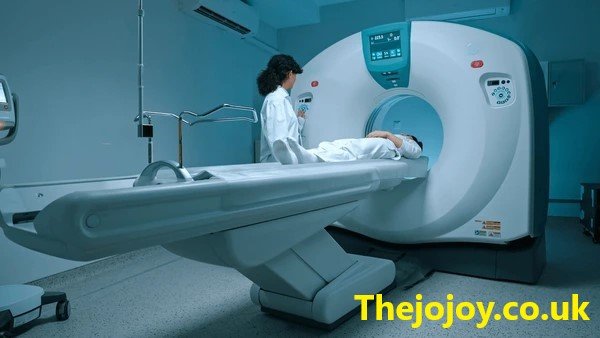Laturedrianeuro represents a complex and often misunderstood phenomenon in the realm of neurological disorders. Understanding how laturedrianeuro are caused requires a deep dive into both the biological substrates and environmental influences that contribute to its onset. In this article, we will explore the intricate causes behind laturedrianeuro, examining genetic dispositions, neurochemical imbalances, lifestyle factors, and recent breakthroughs in medical research. By the end, readers will gain a holistic understanding of this condition and practical insight into its diagnosis, treatment, and prevention.
Defining Laturedrianeuro: What It Is and Why It Matters
Before exploring causes, it is crucial to clearly understand what laturedrianeuro entails. Typically manifesting as a syndrome characterized by disrupted neural communication, laturedrianeuro affects motor functions, cognitive processes, and emotional regulation. Its symptoms range from mild cognitive impairment to severe neurological deficits, which profoundly impact quality of life. Medical professionals categorize it within the spectrum of neurodegenerative and neuroinflammatory disorders, making its study a priority for advancing neurological health.
The implications of laturedrianeuro’s causes extend beyond clinical diagnosis, touching on preventative medicine, mental health strategies, and public health policy. Understanding these causes is essential for clinicians seeking effective treatment protocols and for patients aiming to manage or mitigate symptoms.
Genetic Foundations: The Role of Heredity in Laturedrianeuro
Genetics play a pivotal role in how laturedrianeuro develops. Studies have identified specific gene mutations and polymorphisms that predispose individuals to the disorder. These genetic markers influence how neurons function and how susceptible brain tissue is to damage or inflammation.
Researchers highlight several genes linked with neural degeneration, including those coding for proteins responsible for synaptic transmission and myelin sheath integrity. Mutations in these genes can disrupt normal neural pathways, leading to the characteristic symptoms of laturedrianeuro. Additionally, genetic predisposition often interacts with environmental triggers, meaning that heredity alone rarely causes the disorder but sets a biological stage for vulnerability.
Neurochemical Imbalances: How Brain Chemistry Affects Laturedrianeuro Development
Another cornerstone in understanding how laturedrianeuro is caused lies in the neurochemical imbalance within the brain’s microenvironment. Neurotransmitters such as dopamine, serotonin, glutamate, and gamma-aminobutyric acid (GABA) regulate neuronal communication and overall brain function. Disruptions in their levels can provoke neuronal stress or dysfunction.
In many cases, chronic inflammation or oxidative stress may alter the production or reception of these chemicals, leading to a cascade of neurodegenerative effects. For example, excessive glutamate activity can induce excitotoxicity, damaging neurons irreversibly. Conversely, a deficiency in inhibitory neurotransmitters like GABA may lead to heightened neural excitability, contributing to symptom severity.
Environmental and Lifestyle Factors in Triggering Laturedrianeuro
No discussion on causes is complete without examining the environment and lifestyle. Pollution, exposure to neurotoxins, poor diet, and chronic stress can all exacerbate neurological vulnerability.
Neurotoxins found in pesticides, heavy metals like lead and mercury, and industrial chemicals have all been implicated in damaging neural tissue. Additionally, nutritional deficiencies, especially those lacking antioxidants and essential fatty acids, compromise brain health, making neurons more prone to degeneration.
Moreover, chronic psychological stress leads to elevated cortisol levels, which interfere with neural plasticity and repair mechanisms. Individuals with high-stress lifestyles may, therefore, be at greater risk of developing or worsening laturedrianeuro symptoms.
The Role of Infection and Immune System Dysfunction
Emerging research suggests that infection and immune system dysfunction may also contribute to how laturedrianeuro is caused. Certain viral and bacterial pathogens can cross the blood-brain barrier, triggering an inflammatory response in brain tissue.
Autoimmune reactions may then attack neurons or myelin sheaths mistaken as foreign bodies. This neuroinflammation contributes to the progressive damage seen in many laturedrianeuro patients. Examples include infections with herpes simplex virus or Epstein-Barr virus linked to neurological syndromes.
Understanding Pathophysiology: How Cellular Damage Leads to Symptoms
Once the underlying causes initiate neuronal injury, the pathophysiology of laturedrianeuro unfolds systematically. Damaged neurons lose their ability to transmit signals efficiently, leading to functional deficits observed clinically. Cellular mechanisms such as apoptosis (programmed cell death) and necrosis (uncontrolled cell death) contribute to the degenerative process.
Additionally, the loss of support from glial cells, responsible for neuron maintenance, accelerates progression. The cumulative effect results in symptoms ranging from memory loss and motor dysfunction to emotional instability and psychiatric manifestations.
Diagnostic Advances: Identifying Causes through Modern Medicine
Modern diagnostic tools enable a more precise identification of the causes contributing to laturedrianeuro in an individual. Techniques such as neuroimaging (MRI, PET scans), genetic testing, and cerebrospinal fluid analysis help clinicians pinpoint genetic markers, neurochemical alterations, and inflammatory processes.
These insights allow for tailored treatments, addressing the root causes rather than simply managing symptoms.
Treatment Strategies Targeting Underlying Causes
Treating laturedrianeuro involves multidisciplinary approaches that target its various causes. Genetic therapies are emerging to correct mutations or modulate gene expression. Pharmacological agents focus on restoring neurochemical balance, reducing inflammation, or protecting neurons from oxidative damage.
Lifestyle interventions, including diet optimization, stress management, and detoxification protocols, complement medical treatments. Immune-modulating therapies may mitigate autoimmune components. The integration of these strategies offers hope for slowing or reversing disease progression.
Preventative Measures: Minimizing Risk Factors to Avoid Onset
Understanding the causes of laturedrianeuro also informs prevention. Avoiding exposure to environmental toxins, maintaining a nutrient-rich diet, managing stress effectively, and getting timely vaccination against relevant infections are essential.
Routine health checkups and early intervention upon symptom appearance improve long-term outcomes. Public education on risk factors contributes to healthier populations with lower incidences of neurological disorders.
Future Directions in Research
Ongoing studies aim to unravel further how laturedrianeuro is caused at molecular and systemic levels. Advancements in bioinformatics, gene editing technologies like CRISPR, and neuroprotective drug development promise breakthroughs.
Collaborative efforts across neuroscience, immunology, and environmental science will continue to deepen understanding and improve patient care.
FAQs
Q1: What exactly causes laturedrianeuro?
A1: Laturedrianeuro is caused by a combination of genetic mutations, neurochemical imbalances, environmental exposures, immune system dysfunction, and lifestyle factors that collectively lead to neuronal damage.
Q2: Is laturedrianeuro hereditary?
A2: Genetic predisposition plays an important role, but it often interacts with outside triggers. It is not strictly hereditary but having certain gene variants increases risk.
Q3: Can lifestyle changes prevent laturedrianeuro?
A3: Yes, adopting a healthy lifestyle by avoiding toxins, maintaining proper nutrition, managing stress, and preventing infections can reduce risk significantly.
Q4: Are there treatments targeting the causes rather than symptoms?
A4: Emerging therapies like gene editing and immune modulation address root causes, while traditional methods focus on symptom management.
Q5: How is laturedrianeuro diagnosed?
A5: Through neuroimaging, genetic tests, neurochemical analysis, and clinical evaluation, doctors can identify factors causing laturedrianeuro.
Conclusion
The causes of How Are laturedrianeuro Caused are multifaceted, spanning genetic, biochemical, environmental, and immunological domains. Understanding these causes is critical for effective diagnosis, innovative treatment, and meaningful prevention. As research advances, personalized medicine approaches offer promising solutions, enabling better management and improved quality of life for those affected. Awareness and proactive strategies remain essential for combating this complex neurological condition.



